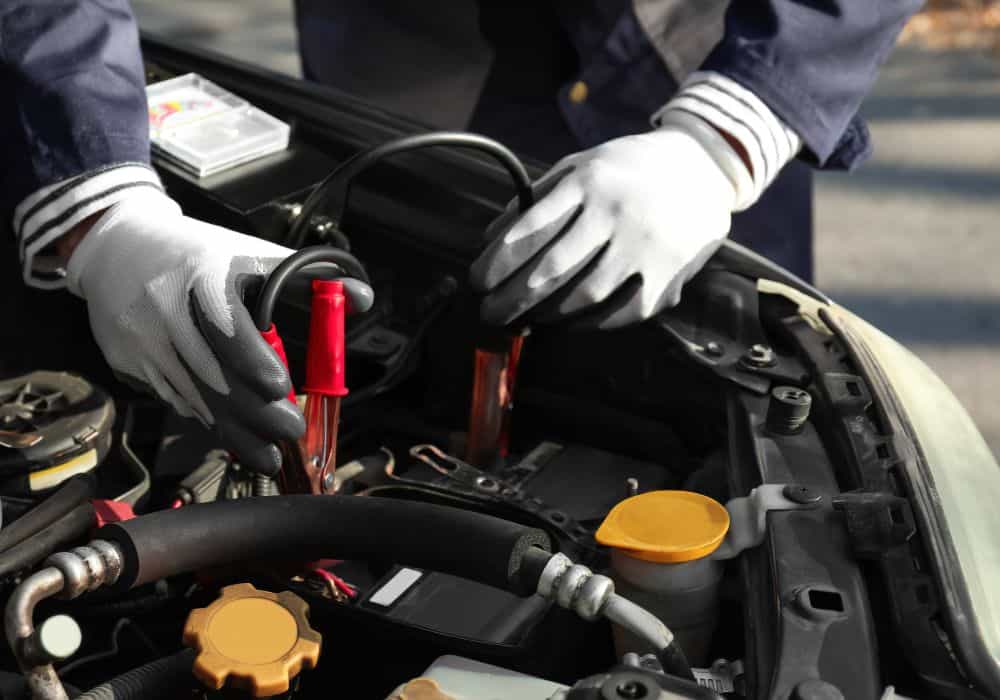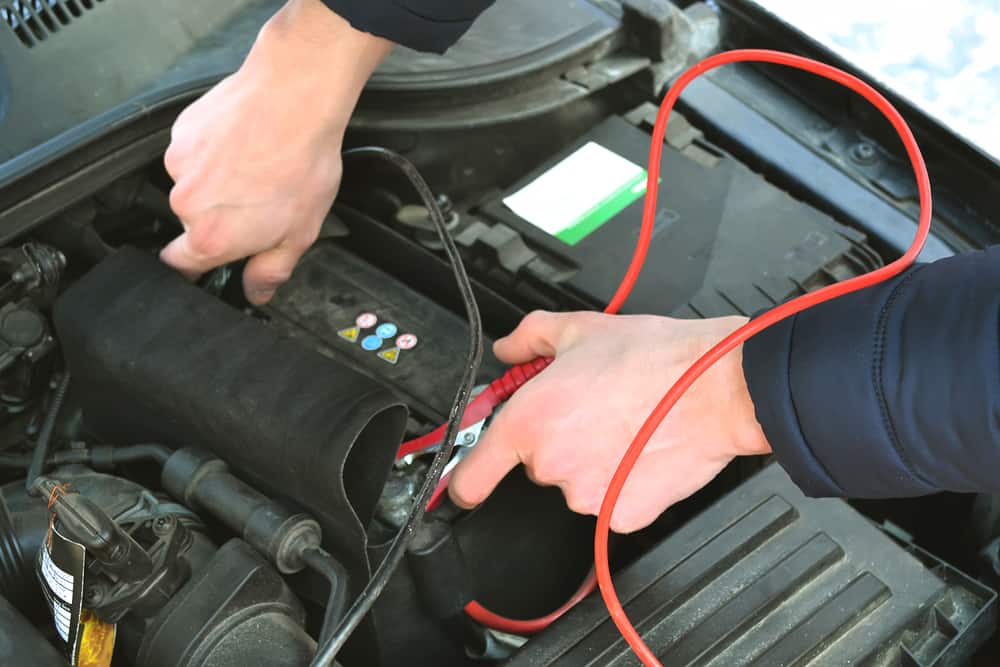Our car battery charges as we use it, and (unless you’re driving an electric vehicle) you don’t need to worry about plugging it in to use it. When the car battery isn’t charging, it affects the whole car and leaves you parked.
It seems like your car battery waits until you have major plans to stop charging, but finding out what repairs you need to make or parts you need to change is relatively easy.
Keep reading as we explain how to inspect your battery and determine whether that’s the issue. We also go into the parts of the battery charging system and how to diagnose those issues, as well as how to deal with a car battery not charging with a charger.
Table of Contents
Identifying a Bad Car Battery
Keep in mind that car batteries are not immortal. Most only last 3 to 5 years before they wear down enough to cause issues, and some of them stop charging completely at this time.
It’s a good idea to replace the battery anyway at this age, even if it isn’t the ultimate problem. Older batteries have a lower capacity and may deal with issues like sulfation that will cause problems down the line.
Otherwise, inspect your dead battery for damage, loose connections, and test it with the proper equipment to check overall health.
1. Initial Battery Inspection
Look over your battery to make sure there is no damage to the casing, including minor bumps, cracks, or dents. A swollen battery is extremely dangerous, and you should replace it immediately.
If you haven’t already verified the age of the battery, look for a sticker with the “month/year” date stamped on it. This tells you when the battery was manufactured, and you can age it off this date.
Any damage to the battery or age past its guaranteed date warrants a new battery.
2. Check Car Battery Terminals and Connections
Look first for any powdery white substantial built up on your battery, usually around the terminals. Corrosion happens normally over your battery’s life, but you can clean it regularly with a wire brush and some baking soda to prevent interfering buildup.
Make sure your positive terminal and negative terminal sit well in your battery, and check for any loose connections.
Your battery cables should also be free of any creasing bends, frays, or other damage. This is also a good time to clean your car battery to make sure no dirt, grime, or debris interferes with your connections.
Replace any damaged parts.
3. Battery Testing
You can test your car battery at home using a voltmeter, but it should have a full charge when you do this.
A more comprehensive testing method uses a load tester. Auto parts stores will usually do this for free (and they can charge your battery). You can replace your battery right in the store.
The load tester not only checks the voltage of the battery but how well it handles a load. If the voltage drops too low (under 9.6 volts) during the test, you understand that the battery is not performing well when in use.
The car is Not Charging the Battery
If you’re sure your car battery isn’t the problem, your fix probably revolves around a component of the charging system.
The most common culprits include:
- Alternator
- Voltage regulator
- Serpentine belt (or its tensioner)
Cars may also have a significant parasitic drain or a faulty ECU that interferes with proper charging.

1. Alternator
Your car’s alternator is what keeps your car battery charged while driving. It converts mechanical power from your drive belt into a DC current your battery can use, then funnels that to your battery.
Alternators last an average of 7 years or 150,000 miles before going out.
An alternator that goes out will not recharge your car battery as it is used, meaning the battery will simply die over time. Cars may jump start just fine only to die as soon as you disconnect your assisting vehicle.
You usually notice dim headlights or interior lighting or erratic behavior from your accessories if you have an alternator or other charging issue. A mechanic or auto parts store can test your alternator health and let you know if it needs replacement.
2. Voltage Regulator
The voltage regulator is a commonly overlooked part of the charging system, but it’s what fixes the voltage from the alternator to make sure it’s sufficient (and not too much) to charge the battery.
This part lasts an average of 100,000 miles, so you shouldn’t need to replace them often.
If the voltage regulator goes out, your alternator may send out too much or too little to charge your battery. Either way, it can cause more damage to your system.
This is usually mounted near your alternator housing. It’s important to replace this part as soon as possible to prevent damage to other parts in your charging system.
3. Serpentine Belt (and/or Tensioner)
The serpentine belt affects many systems in your car, including your electrical system. As the belt or its pulleys wear out, it won’t spin your alternator as often and results in insufficient charging energy and a dead car battery.
This happens even if the belt just gets loose, usually due to a faulty tensioner. Once you replace the suspect parts, your vehicle should be able to generate enough electricity to charge your car battery.
Keep in mind that most serpentine belts last 60,000 to 100,000 miles, and you might want to replace it if it’s been that long anyway to prevent future issues. Check your manual for a more specific time.
4. Parasitic Drain
A parasitic drain can make it seem like your car battery is not charging by draining it overnight.
The best way to check for a parasitic drain is using a multimeter. With the car off, remove your positive battery cable. Set the multimeter to amps, then connect its positive lead (red lead) to your positive terminal.
Connect the black lead to the cable you removed, and you can read the draw in milliamps. A normal drain is anywhere from 50 to 85 milliamps, and anything more than this requires further testing.
Keep your multimeter connected, and start pulling fuses. If you pull one and the draw drops, you’ve found your parasite.
5. Faulty ECU
Your Engine Control Unit (sometimes Engine Control Module, or ECM) controls many systems in your vehicle, and a faulty ECU can easily interfere with charging. It takes information from your sensors to make adjustments that allow your car to keep running.
Signs of a faulty ECU include:
- Lags or surges in your engine
- Misfiring or stalling
- Car not starting
Any ECU problem is likely to trigger your check engine light immediately. This can be a false alarm, but it’s important to check as soon as possible to prevent further issues.
Car Battery Charger is Not Working
In some cases, you ended up with a battery that doesn’t charge on an external charger. If you’ve already determined your battery is in good health and your car’s charging system works fine, it’s time to look at your charger by:
- Making sure you’re using the right charger
- Checking over charger condition
- Cleaning your car battery charger
These are the same steps you would use with any battery charger that doesn’t work for your devices.

1. Make Sure You’re Using the Right Charger for Your Battery
This is especially important if it’s your first time using your charger. Unfortunately, these aren’t universal devices. Your car battery may require a specific type of charger, and using the wrong charger will not provide a sufficient charge.
Beyond this, there are four types of chargers:
- Trickle chargers: dissuade self-discharge when battery left in sitting vehicle
- Solar chargers: more common with RV, marine, or power sports batteries; use the sun for power
- Heavy duty chargers: for dead batteries that need a full charge
- Jump starters: does not charge a battery, but provides power to get where you need to go
Make sure you’re using the charger that best suits your needs.
2. Inspect Charger Condition
Like your battery, check your car charger for:
- Frayed wires
- Dents
- Cracks
- Split casing
Damage to your charging unit may affect its ability to charge your car battery.
3. Clean Your Car Battery Charger
Chargers, especially those in storage, are likely to collect dust or grime over time. Make sure you wipe your charging unit, especially anything that connects to your battery, before you use it.
Rubbing alcohol and a soft lint-free cloth will cut through almost anything without damaging your charger, and the alcohol dries fast so you can connect it immediately without worry.
Conclusion
When your car battery won’t charge, remember to:
- Check your car battery first
- Diagnose any issues with your charging system
- Use an appropriate external charger to give your car battery charge
Issues that extend beyond simple repairs are best handled by a professional mechanic with electrical experience. This sets the stage for a quick and safe repair.
Is your car battery not charging? Let us know what worked for you!
